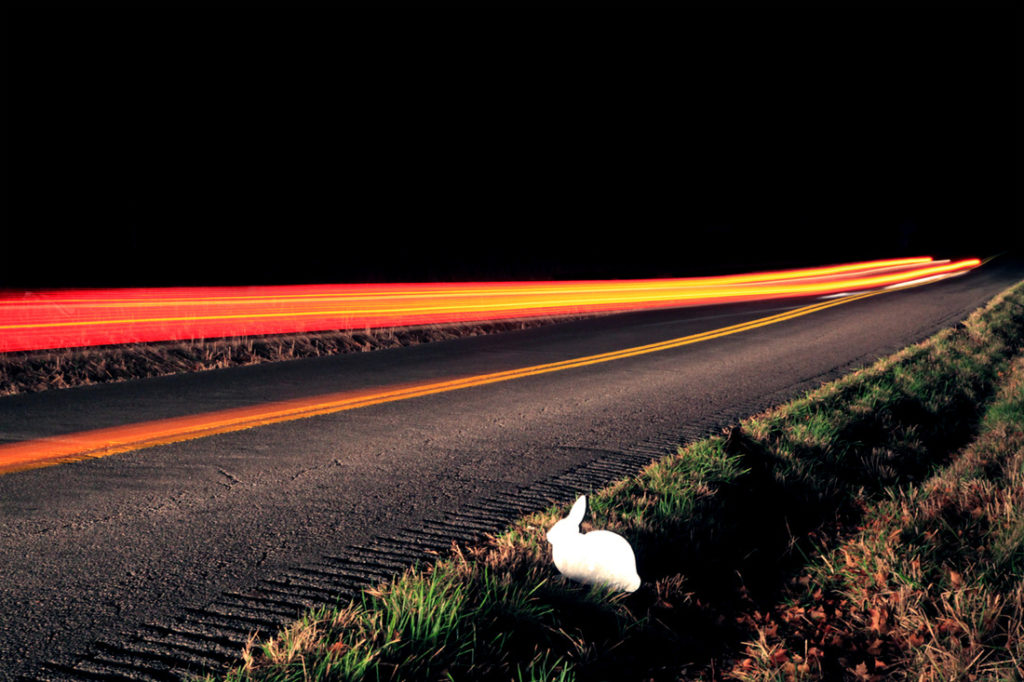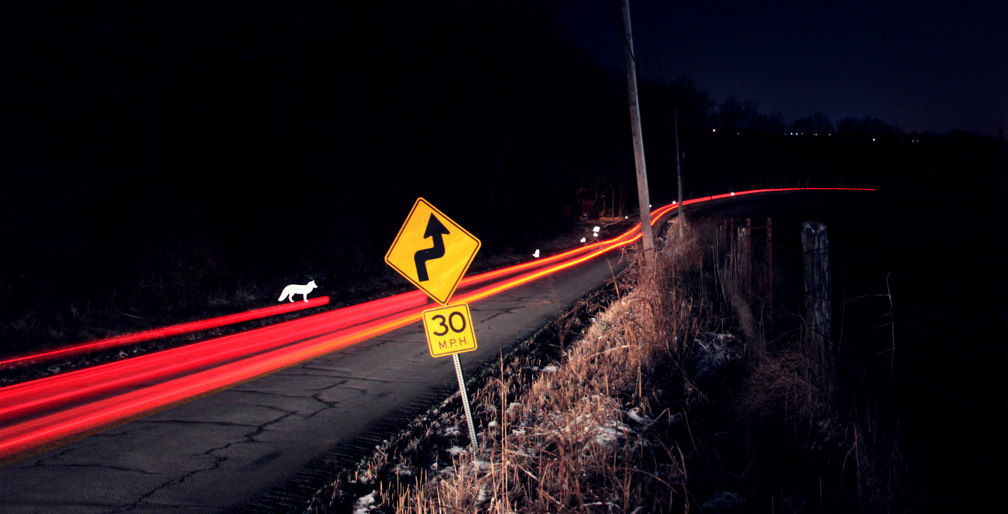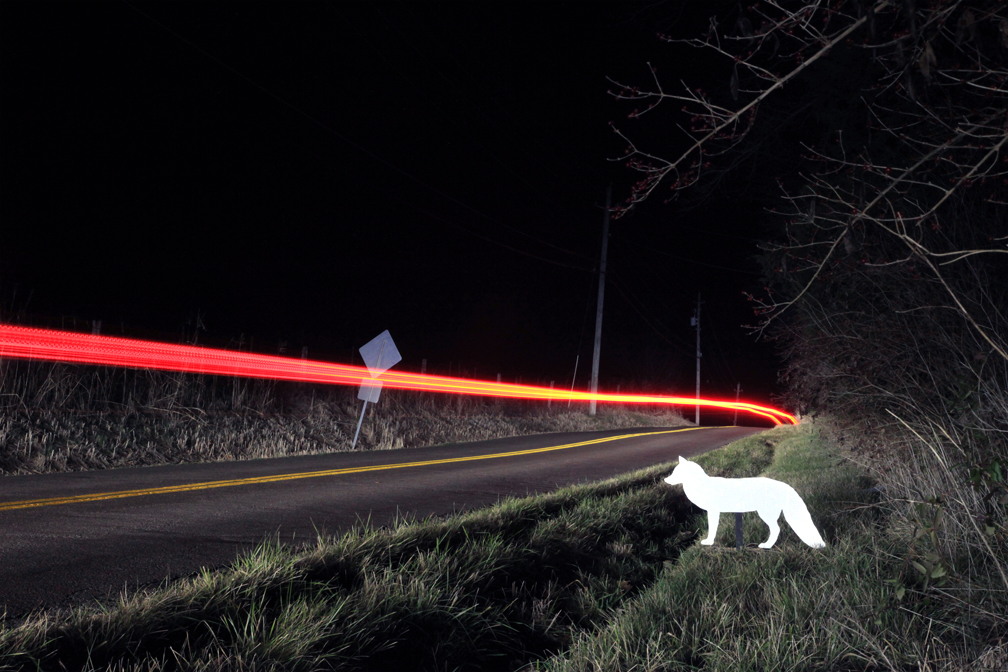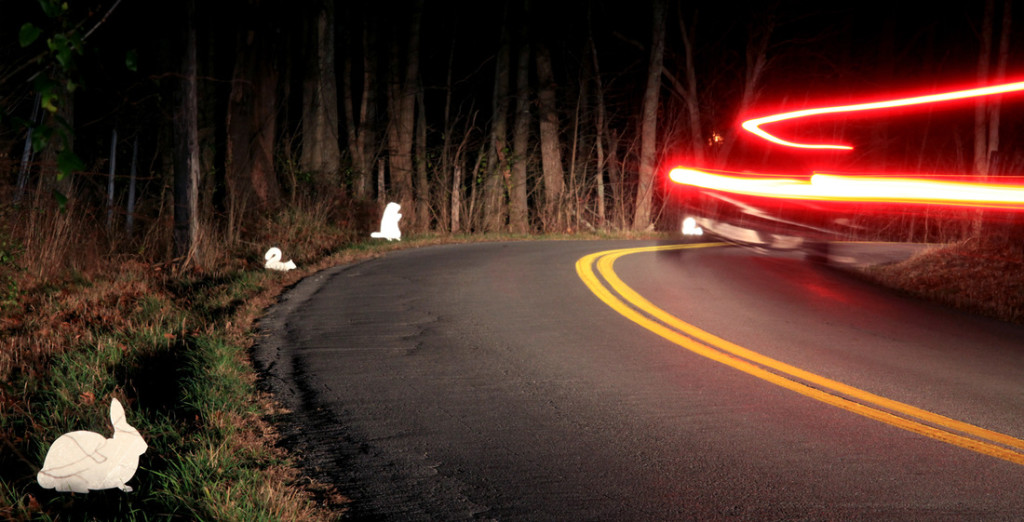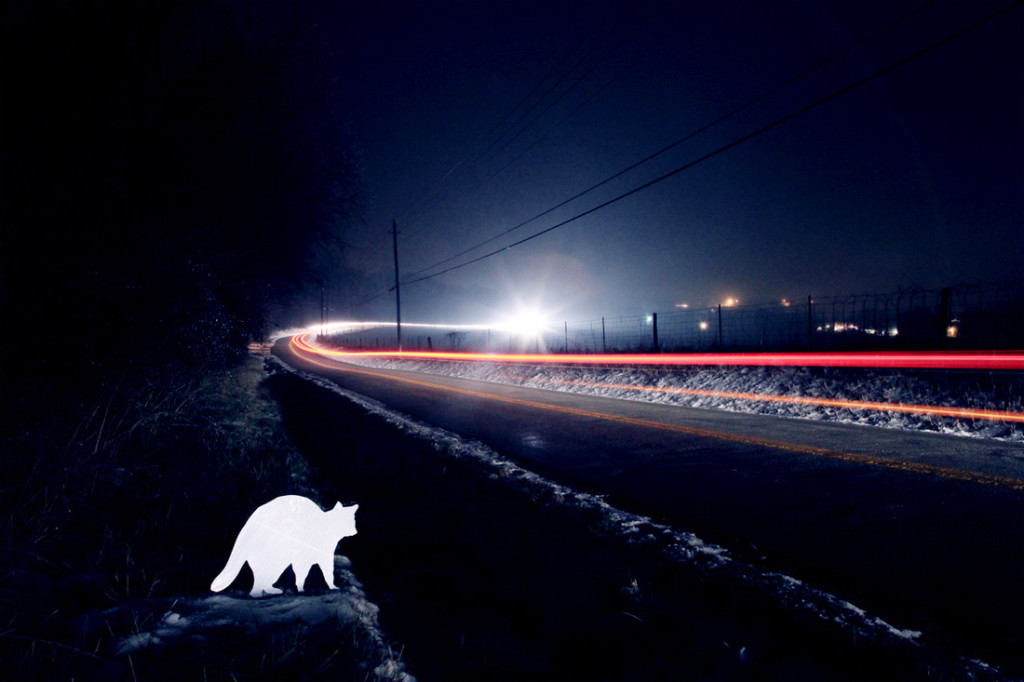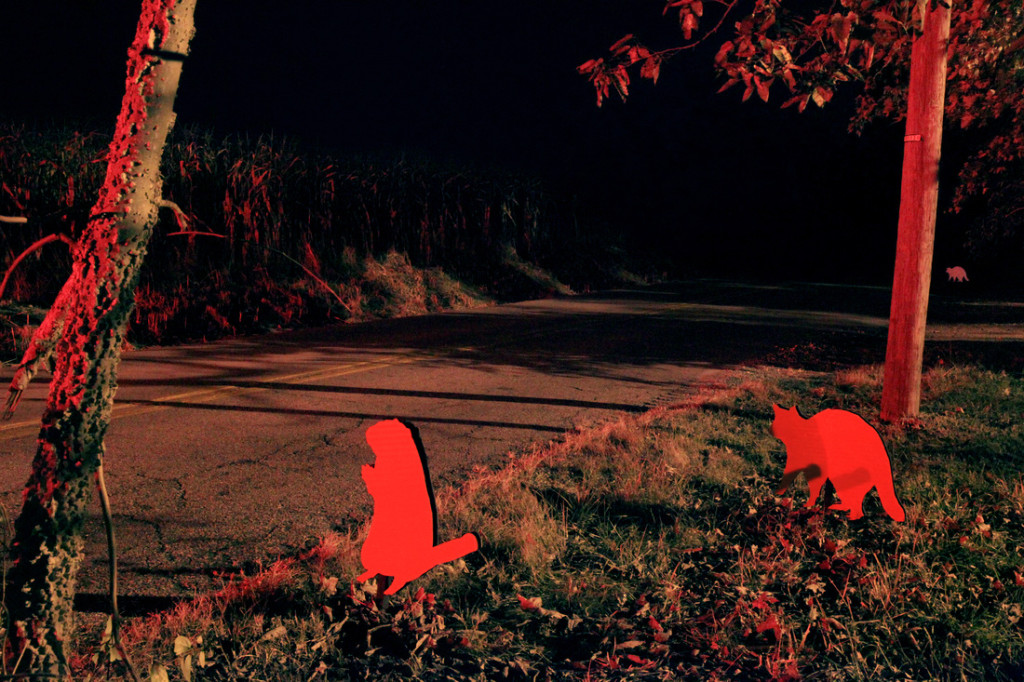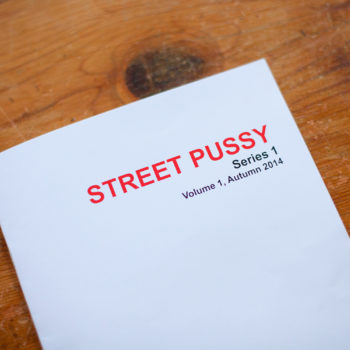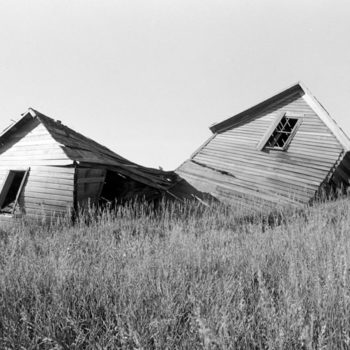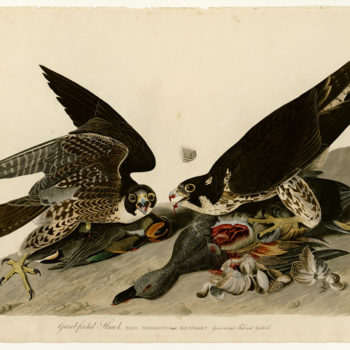I do a lot of Googling of the term “roadkill art.” I believe that’s how I came upon L.A. Watson’s Roadside Memorial Project, some time ago. Watson’s ongoing project is a “site-specific installation of reflective road signs that function as a memorial for animals killed on the road, as well as a new kind of warning sign for drivers.” Positioned low to the ground at the edge of the road are the silhouettes of animals commonly killed by cars. With their headlights on, cars passing by in either direction activate the reflective signs and cause drivers to reduce their speed and pay attention to the edges of the road, where wildlife is most likely to appear. I love what Watson writes about the signs’ color, that “white was chosen not only because it is the most highly reflective color, but because it references the iconography of human roadside memorial crosses and denotes innocence, sacrifice, spirits and ghostly specters.” I think this is such a fantastic project and I can’t wait to see more art like this, both from Watson and from others who recognize the importance of drawing attention to the tragic fact that so many animals are killed by cars on roadways.
Watson writes about her work in the chapter “Remains to Be Seen: Photographing ‘Road Kill’ and The Roadside Memorial Project” in the book Economies of Death: Economic Logics of Killable Life and Grievable Death (in which I recently learned that Watson referenced my own work!). An excerpt from the chapter: An estimated one million animals—are killed each day—in motor vehicle collisions in the United States alone. In order to help combat human fatalities and vehicular damage, wildlife warning signs featuring large-bodied animals are erected to warn drivers to the possibility of their presence; yet signs warning of smaller wildlife—who pose a much lesser threat to human life or property—such as turtles, squirrels, raccoons, or possums, are overwhelmingly absent on our nation’s highway road signs. While wildlife warning signs have been shown to reduce collisions with animals, and can function to protect both human and non-human animals’ lives, their primary purpose remains to protect human lives above all Others (as evidenced by the disparity between signs for large-bodied vs. small-bodied wildlife). In this way, the wildlife warning sign, as a highly visible, public marker, creates a particular kind of frame that works to establish “whose lives can be marked as lives, and whose deaths will count as deaths.” What would an egalitarian representation of road signs that reflects the true diversity of animals killed on the road look like?
From “The Roadside Memorial Project”
Visit artist's site: lawatsonart.com
Posted November 16th, 2016

